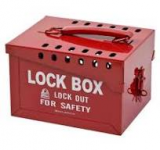kaveenkw123
Member
- Location
- NYC
- Occupation
- Electrical Engineer
Im working on a renovation project for all mechanical equipment in the building. This is my first MCC project.There are three MCCs in the building and all three are federal pacific. I suggested replacement of said MCC given that FS is no longer in business and some of the pumps are being increased from 5HP to 20HP. Client wants to add VFDs to all the new HVAC equipment.
I was looking around and found that some MCCs offer built in VFDs to each bucket. Any concerns regarding using such MCCs?
Additionally, I read in some articles that it is not advised to add a disconnect between VFD and the motor; in this case since the MCC w/VFD will not be in the visinity of the equipment, im guessing I would still need a means of disconnect as per NEC; any thoughts or concerns with adding a disconnect between VFD and motor?
Thankyou!
I was looking around and found that some MCCs offer built in VFDs to each bucket. Any concerns regarding using such MCCs?
Additionally, I read in some articles that it is not advised to add a disconnect between VFD and the motor; in this case since the MCC w/VFD will not be in the visinity of the equipment, im guessing I would still need a means of disconnect as per NEC; any thoughts or concerns with adding a disconnect between VFD and motor?
Thankyou!


